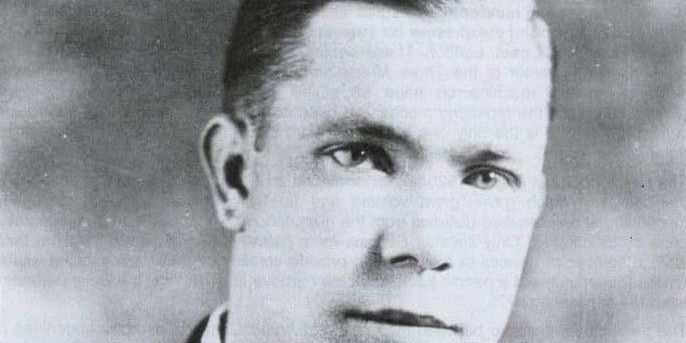
1893–1964

Fiddler, accordion player and singer Frank Quinn was one of the most popular and prolific Irish recording artists of the 78 rpm era. He was born on 11th October 1893 in Greagh, a townland in the parish of Killoe near the town of Drumlish, County Longford, one of five children of Patrick and Mary Anne Quinn. In 1910, at the age of 17, he emigrated to America, settling at first with his older sister Mary Anne in Highland Falls, a Hudson River town adjacent to the U.S. Military Academy at West Point. At some point, he relocated to New York City, where he joined the police force in 1917. Census records show that he and his wife Mary had two children and that in 1940 he was living in the Bronx, but nothing more has been discovered of his personal life.
Conor Ward, who received a PhD from Dundalk Institute of Technology for a study of the music of north Longford, considers it likely that Quinn’s fiddle playing was learned from Bernard Rogers (1856-1907), a student of the renowned blind fiddle master Thomas Kernan. Quinn would later name one of his recorded fiddle selections “Master Rogers” in honor of the local hero. Nan Fitzpatrick (1909-2002) from Aughavas, Co. Leitrim, who recorded singing duets with Quinn in the 1930s, related that Quinn also played in the New York Police Band on the clarinet, an instrument he may well have learned in one of the several marching bands active in the Drumlish area in his youth.
Quinn’s recording career spanned over fifteen years from 1921 to 1936. Many of his early discs billed him as “Patrolman Frank Quinn,”. Until early 1924, he recorded solely on the melodeon (one-row button accordion) but after that was featured equally often on the fiddle – his recorded repertoire includes 43 tunes on the fiddle and 62 on the melodeon. Most were solo tracks, but he also recorded duets with Fermanagh fiddler Joe Maguire, fellow Longford fiddler James Clark, tenor banjo player Eddie Dunne Jnr. and a melodeon player known only as P. Crowley. As his recording career proceeded, he devoted himself more to singing, both as a soloist and in duet with Nan Fitzpatrick and others. His song repertoire included old Irish traditional vocals and American stage-Irish or vaudeville numbers.
As with many other Irish recording artists of his era, Quinn’s recording career ended in the 1930s under the impact of the Great Depression. Curiously, he seems to have playedalmost exclusively as a recording artist. His name does not feature in contemporary advertising or reporting on dancehall bands, radio programs or other live musical performances. All that is known of his life after the pre-World War II “golden age” of Irish recording is that he passed away in January, 1964 at the age of 71.